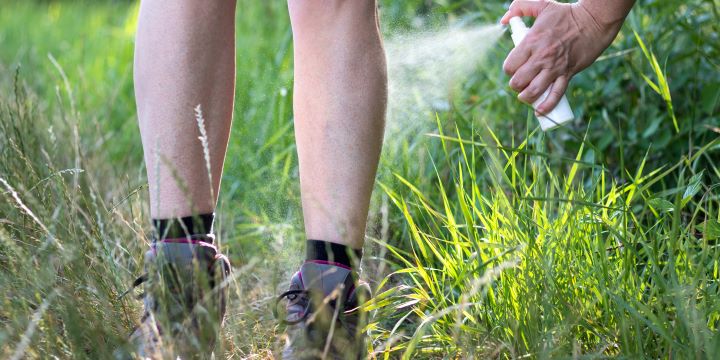Key Takeaways:
- Deep dive into the dangers and ecological roles of ticks and mosquitoes.
- Necessary preventive measures and strategies for personal protection against these pests.
- Effective landscaping tips to deter pests and create safer outdoor spaces.
- Chemical versus natural remedies – understanding the benefits and limitations.
- Impact of pet care on controlling tick and mosquito populations in your locale.
- Importance of community awareness and collaborative efforts in managing pest-related problems.
Table of Contents:
- Introduction to Tick and Mosquito Threats
- Ticks 101: Ecology and Health Implications
- The Buzz on Mosquitoes: Beyond the Itch
- Personal Protection Strategies
- Landscaping for Pest Control
- Safe Use of Chemical Repellents and Treatments
- Eco-Friendly and Natural Remedies
- The Role of Pets in Pest Management
- Community Action and Public Awareness
- Conclusion: Staying Informed and Proactive
Introduction to Tick and Mosquito Threats
As you step into the lush greenery of your backyard, the last thing you want is for ticks and mosquitoes to ruin your outdoor reverie. The reality is that these small yet potent creatures can carry diseases that pose significant health risks to humans. From the mild irritation of a mosquito’s bite to the potentially severe consequences of tick-borne diseases, these pests are more than just bothersome: they are a threat to be taken seriously. Effective Massachusetts mosquito control is essential in mitigating these risks and ensuring the health and well-being of yourself and your family.
Ticks 101: Ecology and Health Implications
Ticks quietly lie in wait in their natural habitats, such as leaf piles, grassy fields, or forest floors. Upon detecting a potential host’s warmth and carbon dioxide, they latch on, potentially transferring diseases in their bite. In the United States, one of the most feared tick-borne diseases is Lyme disease, which,, if not treated in a timely, can lead to chronic symptoms. Understanding the behaviors of ticks and how they relate to their environments allows us to protect ourselves better. For instance, knowing that ticks can be active even in temperate winters helps take year-round precautions. Information from the CDC’s guide on tick-borne diseases can provide valuable insights into these creatures’ illnesses and how best to steer clear of them.
The Buzz on Mosquitoes: Beyond the Itch
Mosquitoes have earned their infamy for their persistent and itchy bites and their role in transmitting diseases like Zika, West Nile, and malaria. Warm weather and stagnant water create ideal breeding conditions for mosquitoes, inviting them into our backyards. Reducing their numbers involves understanding their lifecycle, from egg to adult, and identifying where they breed. The high stakes of the health risks associated with mosquitoes are discussed by world health authorities, such as the WHO’s fact sheets on vector-borne diseases, which shed light on prevention strategies and the global efforts to control and prevent the spread of these diseases.
Personal Protection Strategies
Personal deterrents can be impactful when safeguarding against ticks and mosquitoes. Repellents containing DEET or picaridin provide a chemical barrier against these pests. Essential oils derived from plants like lemongrass, eucalyptus, and peppermint are also effective for short durations when used in commercial insect repellents. Weaving protective clothing and timing outdoor activities around pests’ less active hours offer additional layers of defense, minimizing our vulnerability to the potential diseases these small yet dangerous creatures carry.
Landscaping for Pest Control
Landscaping decisions can significantly influence your exposure to ticks and mosquitoes. Well-manicured lawns, for instance, provide fewer areas for ticks to hide, while the strategic planting of pest-repelling flora can naturally reduce mosquito populations. Ensuring that water doesn’t accumulate in your backyard, whether in plant saucers or clogged gutters, eliminates breeding places for mosquitoes and should be a regular aspect of property maintenance. Thoughtful landscaping becomes a visual and functional enhancement to your living space, creating a buffer zone against tick and mosquito invasions.
Safe Use of Chemical Repellents and Treatments
For many, chemical repellents and treatments are necessary to manage tick and mosquito populations effectively. Safe use is paramount to protect personal health and the surrounding environment. Adhering to the guidelines set forth by the Environmental Protection Agency (EPA) ensures that our products are safe and efficient in pest control. Reading product labels and understanding the application and dilution instructions can prevent misuse and unintended consequences such as pollinator decline or water contamination.
Eco-Friendly and Natural Remedies
While traditional chemical options exist, there is growing interest in eco-friendly and natural alternatives for pest control. Beneficial insects and garden animals such as birds, bats, and even certain species of ants can control pests naturally. Furthermore, non-toxic homemade remedies, leveraging substances like apple cider vinegar or garlic oil, can offer a more natural, albeit sometimes less reliable, strategy. Keeping in mind the pros and cons of each approach allows for a balanced and thoughtful choice in managing pest populations without causing undue harm to the ecosystem.
The Role of Pets in Pest Management
Household pets are often an overlooked bridge between ticks and mosquitoes and their human hosts. As dogs and cats roam outdoors, they may unknowingly collect these parasites and bring them into shared spaces. Proactive pet care, including regular treatments for ticks and fleas and mosquito-repelling collars, is imperative in interrupting this cycle. Consistently inspecting pets for ticks after outdoor activity can prevent these pests from gaining a foothold in your home and impacting the health of anyone within it.
Community Action and Public Awareness
Combating the threat of ticks and mosquitoes extends beyond individual actions to community involvement. Public health campaigns and community-run programs provide education on recognizing the risks associated with these pests and empower individuals to take collective action. Removing trash, clearing out stagnant water, and organizing public information sessions can all contribute to a more knowledgeable and proactive stance against tick and mosquito proliferation. The reduction in pest populations due to widespread public awareness can significantly benefit entire communities.
Conclusion: Staying Informed and Proactive
Ticks and mosquitoes present real threats that can be mitigated through education, preparation, and informed action. Whether choosing to wear protective clothing, engage in mindful landscaping, apply repellents safely, or adopt natural alternatives, the cumulative effect of all these measures provides the most robust defense against these pests. By maintaining an informed and proactive approach, individuals, alongside their communities, can continue to enjoy the simple pleasure of spending time in their backyards with confidence and peace of mind.




